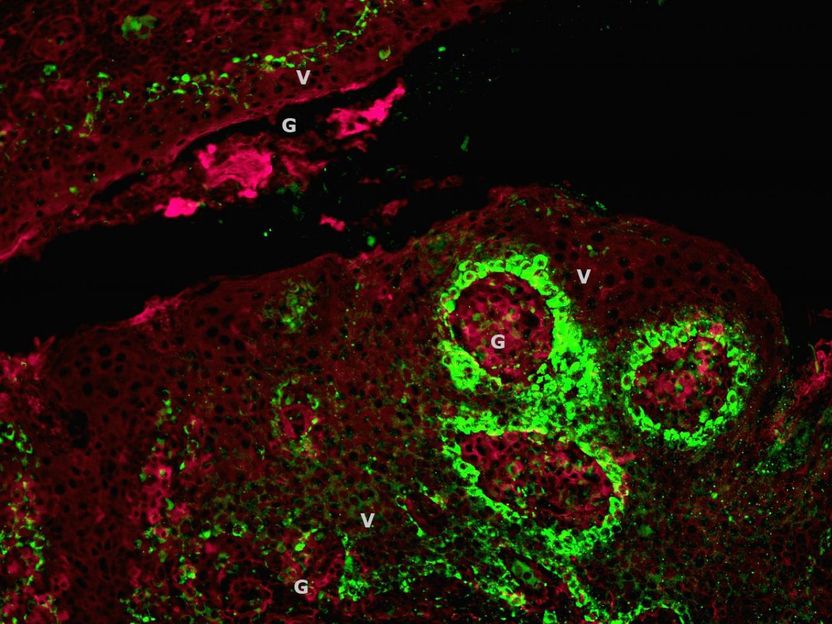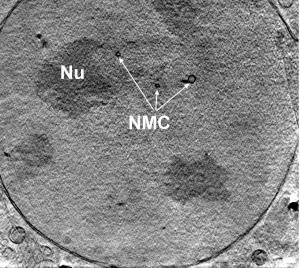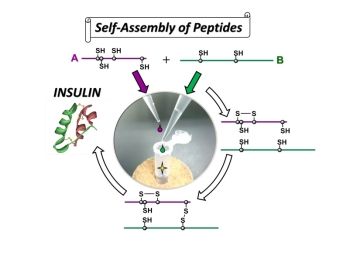Extreme nature helps scientists design nano materials
Scientists are using designs in nature from extreme environments to overcome the challenges of producing materials on the nanometre scale. A team from the UK's John Innes Centre, the Scripps Research Institute in California and the Institut Pasteur in Paris have identified a stable, modifiable virus that could be used as a nanobuilding block.
Viral nanoparticles (VNPs) are ideally sized, can be produced in large quantities, and are very stable and robust. They can self-assemble with very high precision, but are also amenable to modification by chemical means or genetic engineering.
Some applications of VNPs require them to withstand extremely harsh conditions. Uses in electrical systems may expose them to high temperatures, and biomedical uses can involve exposure to highly acidic conditions. VNPs able to remain functional in these conditions are therefore desirable. The team identified viruses from the hot acidic sulphurous springs in Iceland. One of these, SIRV2, was assessed for its suitability for use as a viral nanobuilding block.
SIRV2 is a virus that infects Sulfolobus islandicus, a single-celled microorganism that grows optimally at 80°C and at pH 3, and it was also able to withstand other harsh environments created in the laboratory. This shows that the rigid, rod-shaped SIRV2 virus capsule must be very stable, an important characteristic for use as a nanobuilding block. To be potentially useful as a VNP, the viral capsule also needs to be open to modification or decoration with functional chemical groups.
The researchers found that, depending on the chemistry used, modifications could be targeted specifically to the ends of the virus particle, to its body, or both. This spatially controlled modification is unique to this VNP, and opens up new possibilities when the nanobuilding blocks are built up into arrays or layers. Since the virus body and ends can be selectively labelled it is expected that arrays with different physical properties can be fabricated, for example by aligning particles body-to-body versus self-assembly end-to-end. This option is not possible with other rod-shaped VNPs.
"Future applications may be found in liquid crystal assembly, nanoscale templating, nanoelectronic and biomedical applications." said Dr Dave Evans of the John Innes Centre.
"Further studies towards the development of these VNPs for materials are currently underway", said Dr Nicole F. Steinmetz of the Scripps Research Institute. "We are looking into the use of the particles to generate complex structures such as rings or tetrapods".
Original publication: Nicole F. Steinmetz, Ariane Bize, Kim C. Findlay, George P. Lomonossoff, Marianne Manchester, David J. Evans, David Prangishvili ; "Site-specific and spatially controlled addressability of a new viral nanobuilding block: Sulfolobus islandicus rod-shaped virus"; Advanced Functional Materials 2008.
Most read news
Topics
Organizations
Other news from the department science
These products might interest you

Eclipse by Wyatt Technology
FFF-MALS system for separation and characterization of macromolecules and nanoparticles
The latest and most innovative FFF system designed for highest usability, robustness and data quality

DynaPro Plate Reader III by Wyatt Technology
Screening of biopharmaceuticals and proteins with high-throughput dynamic light scattering (DLS)
Efficiently characterize your sample quality and stability from lead discovery to quality control

Get the life science industry in your inbox
By submitting this form you agree that LUMITOS AG will send you the newsletter(s) selected above by email. Your data will not be passed on to third parties. Your data will be stored and processed in accordance with our data protection regulations. LUMITOS may contact you by email for the purpose of advertising or market and opinion surveys. You can revoke your consent at any time without giving reasons to LUMITOS AG, Ernst-Augustin-Str. 2, 12489 Berlin, Germany or by e-mail at revoke@lumitos.com with effect for the future. In addition, each email contains a link to unsubscribe from the corresponding newsletter.
Most read news
More news from our other portals
Last viewed contents
Analytik Jena AG establishes subsidiary in Thailand

Stolze Science & Business Consulting - Hannover, Germany
Sartorius Stedim Biotech and Bosch Packaging Technology Announce Global Collaboration

Bacteria acquire resistance from competitors

HPV may lurk in your throat

The origins and ID of pancreatic endocrine cells - Endocrine stem cells in the pancreas disappear after birth























































